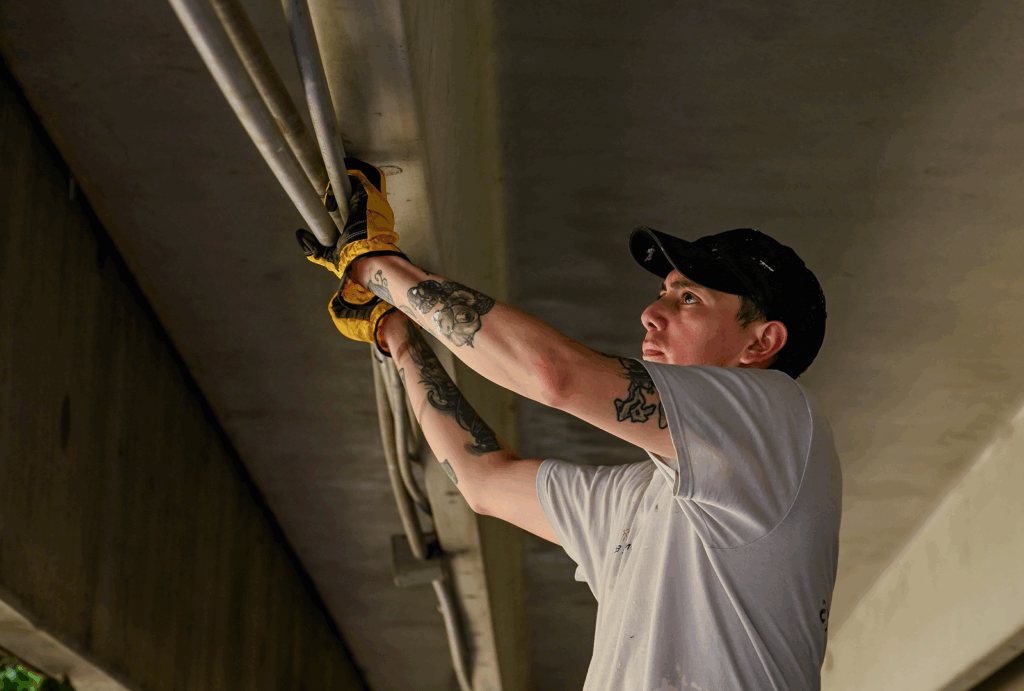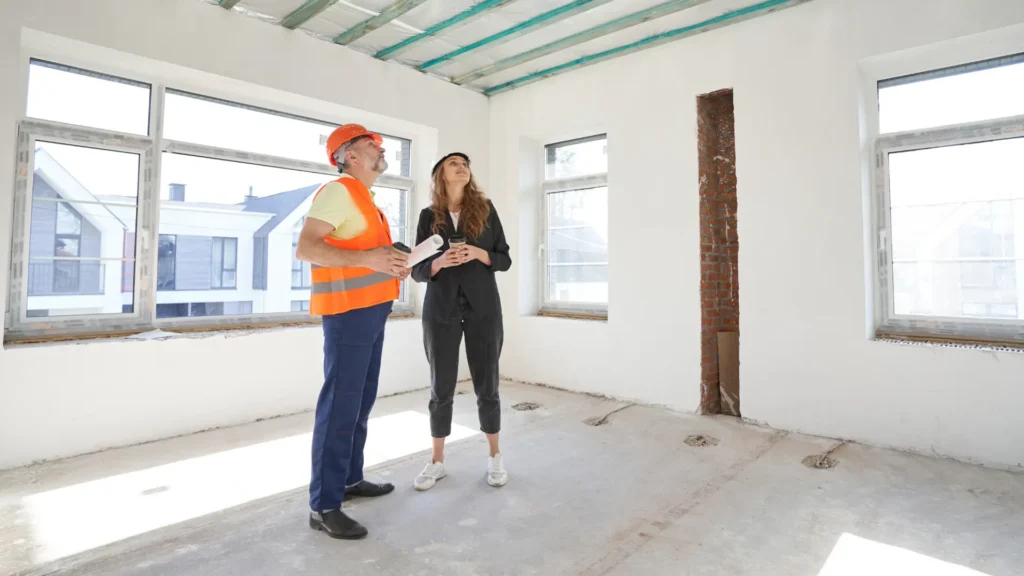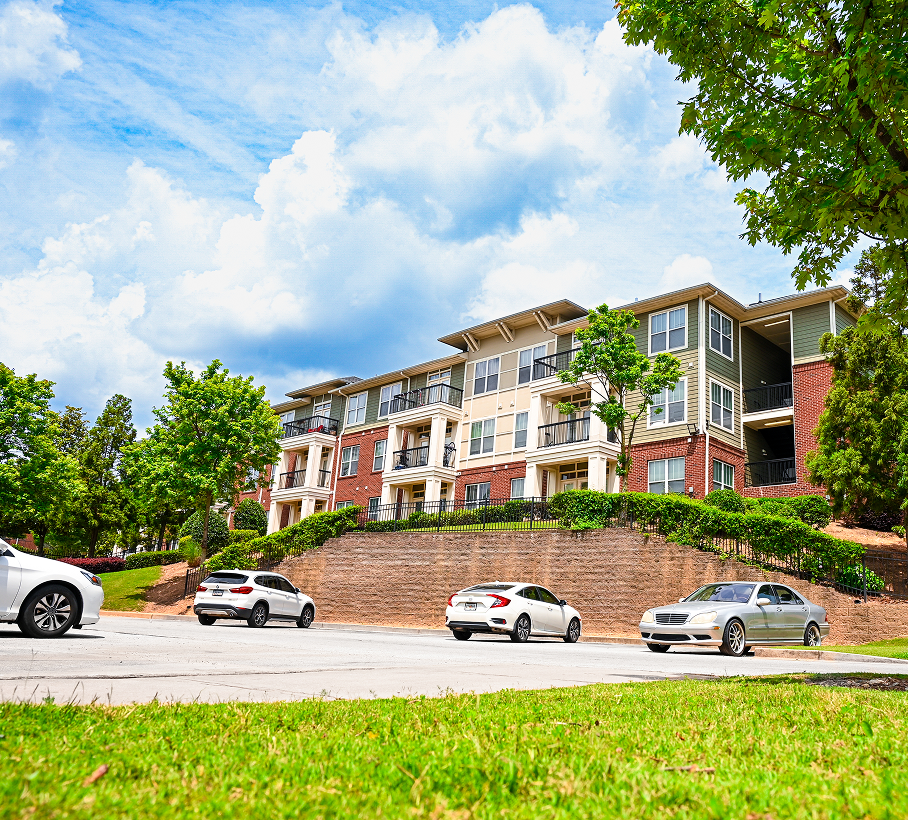Staying compliant with HUD’s evolving inspection rules can feel overwhelming — but falling behind isn’t an option. If you manage multifamily properties, work for a housing authority, or invest in HUD-assisted housing, you’ve likely heard about the new NSPIRE Standards. But what exactly are they, why do they matter now, and how do they change what you need to do to keep your properties in compliance?
In this guide, we’ll break down the National Standards for the Physical Inspection of Real Estate (NSPIRE) — the HUD program designed to unify inspection standards, prioritize resident health and safety, and ensure properties are well-maintained year-round. We’ll also show you how NSPIRE Experts helps you pass your inspections the first time, avoiding costly violations, funding risks, and tenant complaints.
👉 Quick Tip: If you want to see HUD’s official NSPIRE guidelines straight from the source, visit the HUD NSPIRE page.

What Are NSPIRE Standards? (National Standards for HUD Inspections)
NSPIRE — short for National Standards for the Physical Inspection of Real Estate — is HUD’s new model for inspecting public housing, Housing Choice Voucher (HCV), and multifamily properties that receive federal assistance.
For decades, property owners and managers followed UPCS (Uniform Physical Condition Standards) and HQS (Housing Quality Standards). While these models were foundational, they often led to confusion, inconsistent scoring, and overlooked health hazards. HUD’s new NSPIRE Standards fix that by merging these older models into one unified framework.
Understanding HUD NSPIRE Standards for Property Owners
At its core, the NSPIRE inspection standard is all about people. HUD’s main goal is to protect residents’ health and safety by prioritizing conditions that directly affect how people live every day. This means your inspection isn’t just about what looks good on paper — it’s about whether every unit is truly safe, functional, and habitable.
Key NSPIRE principles include:
✅ People-Centered Design: Every standard is built to protect residents’ well-being first.
✅ Consistent, Defensible Scoring: The new scoring model uses a 0–100 scale, where 60 is the minimum passing score. Units carry the most weight, so you can’t overlook inside living conditions.
✅ Continuous Improvement: NSPIRE isn’t a one-and-done rulebook. It evolves every three years, using real feedback from housing authorities, property owners, and residents to stay up to date.
🔗 Helpful resource: HUD outlines the full details in the Federal Register Final Rule.
How NSPIRE Standards Replace UPCS and HQS
Before NSPIRE, you might have had to juggle UPCS for public housing or HQS for voucher units. Different programs, different checklists — same headaches.
With NSPIRE, there’s now one clear standard that applies to all covered HUD-assisted housing. This unified approach makes it easier for property managers, housing authorities, and investors to know exactly what’s expected.
For example:
- Mold-like substances at high levels are now clearly categorized as deficiencies.
- Infestations, missing handrails, non-working smoke alarms — these are all explicitly addressed.
- Correction timeframes are defined: Life-threatening issues must be fixed within 24 hours, while severe issues have a 30-day window.
This clarity means less guesswork, but also less room for error.

Why NSPIRE Standards Matter for HUD Compliance
You might be thinking: “If my properties passed REAC inspections before, will they pass under NSPIRE?” The truth is: maybe — but you shouldn’t count on it.
The NSPIRE Standards put more emphasis on things that directly impact resident health and safety. That means more items on your property could trigger a fail if they’re not fixed properly or on time.
Risks of Failing a NSPIRE Inspection
If your property fails a NSPIRE inspection, the impact goes way beyond a low score. For Housing Henry — our typical housing authority client — failed inspections can lead to:
- Loss of critical HUD funding
- Expensive fines and penalties
- More frequent follow-up inspections
- Negative press and tenant dissatisfaction
For Property Patrick, the busy property manager, failing means last-minute repairs that eat up your budget, risk of tenant turnover, and ongoing stress.
And for Investor Ian, low scores hurt property value, delay leasing, and put the entire project’s profitability at risk.
How NSPIRE Standards Impact Funding and Operations
Under NSPIRE, you can’t afford to “wait and see.” The new standards are clearer — and so are the consequences for non-compliance. Here’s what’s different:
- Higher Weight on Units: If individual units don’t meet the standard, your score takes a big hit — no matter how nice your building’s exterior looks.
- Faster Correction Deadlines: Life-threatening issues (like a broken smoke alarm) must be fixed within 24 hours. Severe but non-life-threatening problems must be fixed within 30 days.
- More Detailed Scoring: Every deficiency comes with a clear health or safety rationale. That means your repairs must align with the standard — shortcuts won’t pass.
✅ Pro tip: The best way to stay compliant? Start early. Book a professional NSPIRE Pre-Inspection to find issues before your official HUD inspection date.

How NSPIRE Inspections Work: Inside the NSPIRE Standards Process
So how do these inspections actually work under the new NSPIRE model?
The NSPIRE Standards break down your property into three inspectable areas: Unit, Inside, and Outside.
The Three Inspectable Areas: Unit, Inside, Outside
1️⃣ Unit: This carries the most weight. It includes everything inside an individual dwelling: walls, floors, ceilings, smoke and CO alarms, HVAC, plumbing, electrical safety, mold, infestation, and more.
2️⃣ Inside: This covers common areas inside your building, like hallways, laundry rooms, stairwells, elevators, and building systems that aren’t inside a specific unit.
3️⃣ Outside: This includes the building exterior, site, parking lots, fences, walkways, drainage, and outdoor safety features.
Each area has its own checklist of standards and deficiency levels. For example:
- Mold-Like Substances: Visual signs of mold at moderate to severe levels must be addressed quickly.
- Infestation: Evidence of roaches, mice, or rats is a deficiency. You’ll need to show a clear pest management plan.
- Fire Doors & Smoke Alarms: Missing or non-working fire doors and alarms are life-threatening issues under NSPIRE — they must be fixed within 24 hours.
Common Deficiencies Under NSPIRE Standards
NSPIRE Standards are specific — and that’s a good thing. The goal is to eliminate ambiguity. For example:
- Electrical Outlets: Outlets near water must be GFCI-protected.
- Carbon Monoxide: CO detectors must be properly installed in units with fuel-burning appliances or attached garages.
- Handrails and Guardrails: Must be properly installed to prevent falls.
🔗 Tip: Familiarize yourself with real examples by reviewing the HUD Exchange NSPIRE resources.

Importance of NSPIRE Pre-Inspection Services
Let’s be real: even seasoned property managers can miss hidden compliance issues. That’s where a professional NSPIRE Pre-Inspection becomes your secret weapon.
When you bring in NSPIRE Experts before your official inspection, you get:
- A top-to-bottom walkthrough of every unit, interior, and exterior area.
- A detailed deficiency list with photos and explanations.
- Clear, actionable next steps to fix each issue before it impacts your HUD score.
Think of it as an insurance policy for your funding and your reputation.
NSPIRE Standards Deficiency Correction Timelines
One of the most important changes under NSPIRE is the strict correction timeline for deficiencies. This ensures that resident health and safety aren’t left to chance.
Life-Threatening vs. Severe Deficiencies in NSPIRE Inspections
Life-Threatening Deficiencies:
Issues that pose an immediate risk to life — like a missing smoke alarm, carbon monoxide detector, or serious electrical hazard — must be corrected within 24 hours. No exceptions.
Severe but Non-Life-Threatening Deficiencies:
Problems like structural damage, mold-like substances at high levels, pest infestations, or broken entry doors must be corrected within 30 days.
If you miss these timelines, HUD could:
- Fail your inspection outright.
- Require more frequent follow-ups.
- Even withhold funding.
Meeting NSPIRE Standards Correction Deadlines
The truth is, it’s not enough to identify problems — you need the crews and compliance know-how to fix them quickly and correctly.
That’s why NSPIRE Experts offers more than just inspections. We provide:
✅ On-Site Repair Teams: Our crews live on-site if needed, working unit by unit to get your property HUD-ready.
✅ Inspection Shadowing: We stand by your side on the day of your official inspection to advocate for your property and resolve misunderstandings on the spot.
✅ Post-Repair Support: We’ll help you document all fixes to prove compliance if HUD asks for it.
👉 Need help getting started? Download the FREE NSPIRE Checklist to stay on top of every requirement.

Key Differences Between NSPIRE Standards and UPCS/HQS
Many property owners wonder: “How is NSPIRE really different from what we were doing before?”
Unified NSPIRE Inspection Standards Across HUD Programs
The biggest win? No more separate standards for public housing vs. voucher units. NSPIRE Standards apply to:
- Public Housing Programs
- Housing Choice Voucher & Project-Based Voucher Programs
- HUD Multifamily Housing
This makes life simpler for property managers with diverse portfolios.
Health & Safety Focus in New NSPIRE Standards
NSPIRE puts resident health and safety at the center of every standard. For example:
- Mold that might have been overlooked under UPCS now has clear thresholds.
- Infestations must be actively managed — a plan alone isn’t enough.
- Fire safety is non-negotiable: doors, alarms, CO detectors must meet updated specs.
Stakeholder Feedback and Continuous Updates to NSPIRE
Unlike older models, NSPIRE Standards evolve every three years. HUD collects real-world feedback from property owners, inspectors, and residents to update the standards, scoring models, and best practices.
That means you can’t “set it and forget it.” Staying compliant means staying current.
✅ Pro tip: Bookmark the Federal Register for the latest NSPIRE updates.
How to Prepare for NSPIRE Inspections and Meet HUD Standards
You now know what the NSPIRE Standards are, how they impact your funding, and what they mean for your day-to-day operations. So, the big question is: how do you actually get ready for a NSPIRE inspection and make sure you pass the first time?
It starts with a plan — and the right partners.
Here’s a proven step-by-step approach trusted by property managers, housing authorities, and HUD-focused investors across the country.
Step 1: Review Official HUD NSPIRE Standards
Before you can pass your inspection, you need to understand the rules — and HUD has made them public. Every standard now comes with a rationale (why it exists), a severity level, and a required correction timeframe. You’ll see clear explanations for everything from mold levels to smoke alarm placement.
📖 Start by reviewing the Federal Register Final Rule on NSPIRE Standards.
This helps your team know what to expect and what HUD inspectors are trained to flag.
Step 2: Schedule an Expert NSPIRE Pre-Inspection
Now that you know what HUD is looking for, the next step is to bring in a second set of expert eyes — before your official inspection.
Our NSPIRE Pre-Inspection service is built specifically to mimic HUD’s process. We evaluate every aspect of your property — unit by unit — using the most up-to-date NSPIRE guidelines. You’ll get:
- A detailed checklist of deficiencies, ranked by severity
- Photo documentation of problem areas
- A prioritized game plan for making necessary repairs
- An estimated timeline so you can plan your corrections within HUD’s required window
This isn’t a general maintenance walkthrough — it’s a professional dry run of your actual NSPIRE inspection.
🧠 Bonus: If your property scores below the threshold during our pre-inspection, you still have time to fix it — before HUD’s official report puts your funding at risk.
Step 3: Use the Free NSPIRE Checklist to Stay on Track
Our clients love the simplicity of having a single place to track their NSPIRE readiness.
That’s why we created a downloadable, easy-to-follow FREE NSPIRE Checklist that walks you through the most common issues, broken down by area and deficiency type.
Inside, you’ll find:
- A simplified breakdown of HUD’s standards
- Clear descriptions of what’s considered a fail under NSPIRE
- Priority tasks to address first (especially life-threatening risks)
- Space to track your repairs and correction dates
It’s the fastest way to get organized — and stay compliant.
Step 4: Fix Deficiencies and Shadow Your HUD NSPIRE Inspection
Once you’ve identified what needs fixing, the next step is actually getting the work done — quickly, and in line with HUD’s expectations.
That’s where most properties struggle. Whether it’s due to labor shortages, unclear repair requirements, or rushed inspections, many fail simply because they weren’t prepared on inspection day.
Here’s how NSPIRE Experts solves that:
- We send our crews on-site. Our repair teams don’t just “swing by” — they stay at your property if needed, working room by room to fix compliance issues fast.
- We advocate for you on inspection day. Through our Inspection Shadowing service, we walk alongside the HUD inspector during the actual evaluation. If something is questionable, we’re there to clarify, demonstrate compliance, or guide real-time corrections.
- We document everything. From before-and-after photos to repair logs, we help you create the paper trail that proves you met HUD standards — in case questions arise later.
🛠️ Whether you’re fixing cracked ceilings, broken fire doors, or pest issues, we handle repairs with the urgency and detail HUD expects — so you pass the first time.

Why Work with NSPIRE Experts for NSPIRE Compliance
There are plenty of general contractors and inspection firms out there — but only NSPIRE Experts focuses exclusively on NSPIRE inspections, HUD compliance, and high-stakes federal housing standards.
We’re not just checking boxes. We’re solving problems that protect your funding and reputation.
Here’s what sets us apart:
Top Benefits of NSPIRE Pre-Inspections and Shadowing
✅ Fast Turnaround — Nationwide: We can be on-site within 48 hours, anywhere in the U.S. Whether you need a pre-inspection, emergency repair, or shadowing support, we move fast.
✅ Flat-Fee Pre-Inspections: No surprises. You get clear pricing, detailed reporting, and a full assessment so you know exactly where you stand.
✅ On-Site Crews: Our teams live on-site during large projects, ensuring nothing slips through the cracks.
✅ Inspection-Day Advocacy: Don’t go it alone. We show up and walk the inspection with you, ready to speak HUD’s language and defend your compliance.
✅ No Subscriptions. No Delays. We don’t lock you into contracts or slow you down with corporate red tape. We’re your flexible, fast-moving HUD compliance partner.
How NSPIRE Experts Help You Pass HUD Inspections
Whether you’re managing 30 public housing units or 300 multifamily apartments, we help you:
- Understand HUD’s updated NSPIRE requirements
- Fix violations before they become fines
- Pass inspections and avoid re-inspections
- Improve tenant satisfaction by creating safer, healthier homes
- Maintain your eligibility for federal funding
Ready to get help? Get a FREE Quote from NSPIRE Experts
Pass NSPIRE Inspections and Stay HUD Compliant
Download the FREE NSPIRE Checklist to get organized today.
Get a FREE Quote for NSPIRE consulting, pre-inspections, or repair support.
Your next inspection doesn’t have to be stressful — not when you have NSPIRE Experts on your side.
Need help preparing for a NSPIRE inspection? Let’s talk. We’ll get you compliant — and keep you there.
